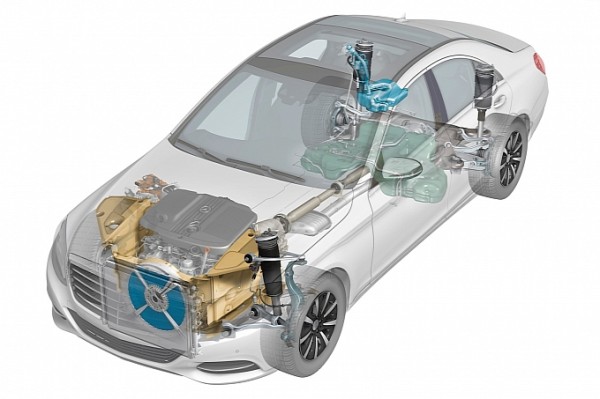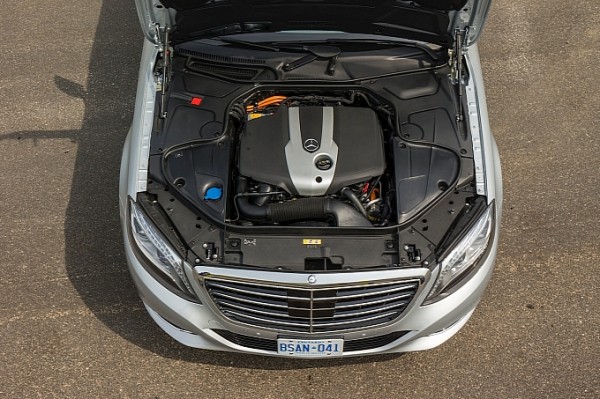
The European Commission has approved the new ECO Thermo Cover engine compartment encapsulation in the Mercedes-Benz S 300 BlueTEC HYBRID as a manufacturer’s Eco Innovation. With this approval, the EU Commission is endorsing the Mercedes-Benz Real Life Efficiency strategy, which ensures low fuel consumption alongside comfort and motoring enjoyment in everyday driving.
Environmentally aware building owners save energy by insulating their buildings, and now Mercedes engineers have adopted a similar idea in the car for the first time. The idea is simple yet effective: thanks to insulating partitions in the engine compartment and a radiator shutter that is closed when the car is at a standstill, the heat inside the Mercedes-Benz S 300 BlueTEC HYBRID remains where it is supposed to be, namely in the engine compartment – even if the vehicle is stopped for some time. When the engine is started again, the higher temperatures reduce friction in the engine, minimise cold-starting losses and cut CO2 emissions. Tests performed at Mercedes-Benz indicate an average fuel saving of up to 1.5 litres per full tank over the course of a year.
In recent years, Mercedes-Benz has been working together with the EU’s Joint Research Center to develop a procedure for verifying the potential savings, and it has become the first automotive manufacturer to successfully apply for allowance of ECO Innovation Credits in the field of thermal energy storage. The CO2 reduction thanks to the ECO Thermo Cover has now been certified by the EU.
ECO Innovations were defined in CO2 legislation as far back as 2009, although the EU has only approved four Eco Innovations since then. The EU approves innovative technologies that offer potential savings during actual driving, in particular those technologies which can not be taken into account in the New European Driving Cycle (NEDC). By way of example, the ECO Thermo Cover has no effect in the NEDC laboratory tests because, in these prescribed consumption tests, the vehicle always has to be cooled down to the same test station temperature.





